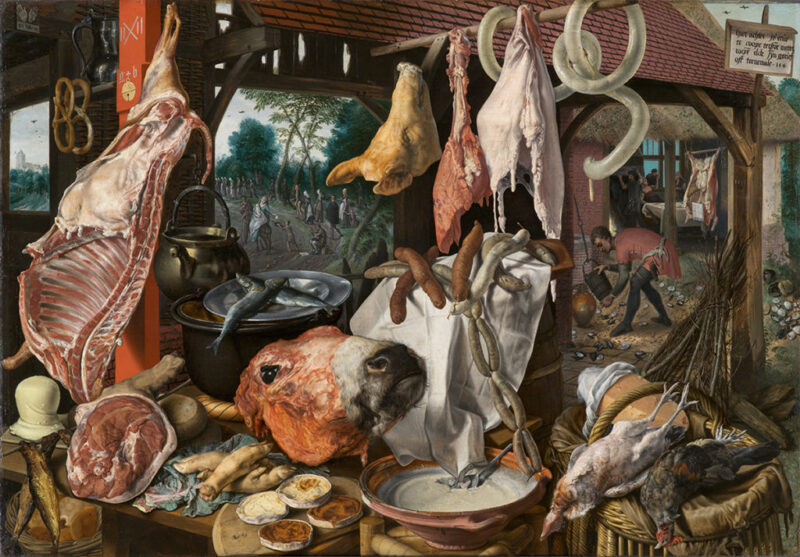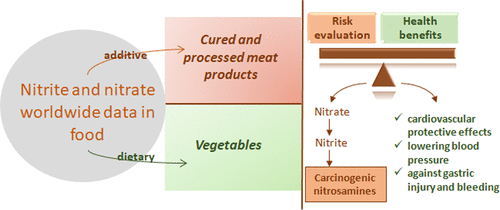Does Processed Meat Cause Cancer? Myths and Facts about Processed Meat and Cancer
In recent years, the debate surrounding processed meat and its potential link to cancer has sparked widespread concern and raised critical questions about what we eat. With millions of people consuming processed meats like bacon, sausages, and hot dogs daily, the issue has never been more urgent. In 2015 World Health Organization (WHO) has classified processed meat as a Group 1 carcinogen, placing it in the same category as tobacco and asbestos . This designation, based on over 800 studies, underscores the significant link between consuming processed meats like bacon, sausages, and ham and an increased risk of certain cancers, particularly colorectal cancer.
But how should we navigate this alarming information? Does this mean that every bite of bacon is a step closer to a diagnosis? In this article, we’ll dive into the science behind these claims, the impact on public health, and whether we should reconsider our habits or simply reduce our intake for the sake of our long-term well-being

What Is Processed Meat?
Processed meat is any meat that has been modified to enhance its flavor or extend its shelf life through various methods such as smoking, curing, salting, or adding chemical preservatives. This category includes a wide range of products like bacon, hot dogs, sausages, deli meats (such as salami, ham, and turkey slices), beef jerky, corned beef, and canned meats .Common Processing Methods
- Smoking: This method involves exposing the meat to smoke to give it a distinct flavor and to preserve it by reducing moisture.
- Curing: Curing involves using salt or sugar to draw out moisture and prevent bacterial growth, often combined with nitrates or nitrites to enhance flavor and color.
- Salting: Salting is used to preserve meat by reducing moisture and inhibiting bacterial growth.
- Adding Preservatives: Chemical preservatives are added to extend shelf life by preventing spoilage and maintaining freshness.
These processes are used to improve the taste, texture, and longevity of the meat, making it more convenient for consumption and storage.
When and how did humanity start to process meat?
The processing of meat has a long history that dates back to ancient civilizations. Initially, early humans hunted wild animals for sustenance. As societies evolved, domestication of animals began, leading to more organized methods of meat production and processing.
The earliest evidence of meat processing can be traced back to the ancient Babylonians, around the 18th century B.C., who created sausages by stuffing pig intestines with meat mixtures. This indicates that even in ancient times, techniques for preserving and preparing meat were being developed.
In colonial America, the meat industry began to take shape as settlers relied on both wild game and domesticated livestock. The practice of salting and packing pork in barrels for storage and shipment gave rise to the term “meat packing.” By the mid-17th century, individuals like William Pynchon in Massachusetts were actively involved in the meat packing business, which included salting and smoking meats for preservation.

A Meat Stall with the Holy Family Giving Alms-Pieter Aeiresten 1551
The Industrial Revolution marked a significant turning point in meat processing. With the growth of urban centers and increased demand for meat, larger slaughterhouses began to emerge. The introduction of the refrigerated rail car in the late 19th century revolutionized the industry by allowing for the transportation of fresh meat over long distances. Chicago became a central hub for meat packing during this period, known for its large-scale slaughterhouses and innovative processing techniques.
By the early 20th century, advancements in technology and transportation led to further developments in meat processing. The establishment of assembly lines in slaughterhouses allowed for more efficient processing methods, contributing to the mass production of various meat products. Regulatory measures such as the Federal Meat Inspection Act of 1906 were introduced to ensure food safety and quality standards.Today, the meat industry has evolved into a highly sophisticated sector that utilizes modern technology and scientific knowledge to produce safe and high-quality meat products. Despite advancements, concerns about health risks associated with processed meats continue to prompt discussions about dietary choices and public health recommendations.
Why Does Processed Meat Cause Cancer?
The consumption of processed meat is linked to an increased risk of certain cancers, notably colorectal cancer, due to several key mechanisms. N-Nitroso compounds (NOCs) form in the body from nitrates and nitrites, leading to DNA damage. Heterocyclic amines (HCAs) and polycyclic aromatic hydrocarbons (PAHs) are generated during high-temperature cooking, acting as potent mutagens. Heme iron in processed meat contributes to oxidative stress and DNA damage. Additionally, alterations in gut microbiota and epigenetic changes further enhance cancer risk. These mechanisms collectively underscore the carcinogenic potential of processed meat, emphasizing the importance of dietary choices in cancer prevention.
Nitrates and Nitrites: What Are They?
Nitrates and nitrites are commonly used as preservatives in processed meats to enhance shelf life and prevent bacterial growth, particularly against pathogens like Clostridium botulinum and Listeria monocytogenes. However, their use has raised health concerns due to their role in forming carcinogenic N-nitroso compounds (NOCs).
Nitrates and nitrites effectively inhibit bacterial growth, ensuring the safety of processed meats. They also contribute to the characteristic flavor and pink color of cured meats by forming nitric oxide, which reacts with myoglobin to create stable pigments.The primary health concern associated with nitrates and nitrites is their ability to combine with amino acids in the stomach to form NOCs. These compounds are known carcinogens that can lead to DNA damage and mutations, potentially increasing cancer risk.

Photo by American Chemical Society
Cooking Methods That Increase Cancer Risk
High-temperature cooking methods such as frying, grilling, and smoking can lead to the formation of harmful chemicals like heterocyclic amines (HCAs) and polycyclic aromatic hydrocarbons (PAHs) in processed meats. These compounds are potent mutagens and have been linked to an increased risk of cancer.
HCAs are formed when amino acids, sugars, and creatine react at high temperatures during cooking processes like pan-frying or grilling. They are particularly prevalent in well-done or charred meats, such as grilled chicken or steak. For example, cooking beef patties at high temperatures can result in significant levels of HCAs.
PAHs are produced when fat and juices from meat drip onto a heated surface or open flame, causing smoke that adheres to the meat. This process is common in grilling or smoking meats. Smoking meats, such as bacon or sausages, can also lead to PAH formation.In everyday life, people often prepare processed meats using these high-temperature methods.

For instance, grilling sausages or burgers over an open flame can lead to the formation of both HCAs and PAHs, especially if the meat is charred. Similarly, pan-frying bacon at high temperatures can produce HCAs, although PAHs are less likely to form in this method. Smoking meats like ham or bacon can result in the formation of PAHs due to the prolonged exposure to smoke.
These cooking methods are common in many cuisines and can significantly impact the chemical composition of processed meats, potentially increasing health risks associated with their consumption.
Processed Meat and Specific Cancer Risks
Processed meat consumption has been consistently linked to an increased risk of several types of cancer, with the most notable being colorectal cancer. However, evidence also points to a connection with other forms of cancer, including stomach, pancreatic, and breast cancer. Let’s break down these risks, supported by relevant data, to make the potential dangers more tangible.
Colorectal Cancer
A 2015 meta-analysis involving over 1.2 million people confirmed these figures, stating that each additional 50 grams of processed meat consumed per day results in an 18% increased risk of colorectal cancer. This study also found that people who ate 100 grams daily faced a 36% higher risk.
The EPIC study—one of the largest dietary studies on cancer—followed 500,000 people and concluded that processed meat consumption significantly contributes to colorectal cancer risk. Even at moderate levels of consumption (50-100 grams daily), the risk increased by 20-30% compared to those who ate little or no processed meat.
These findings highlight a clear pattern: even modest consumption of processed meats increases cancer risk, with the risk rising as intake increases. The mechanisms behind this risk include the formation of N-nitroso compounds (NOCs) from nitrates and nitrites used as preservatives, as well as the production of carcinogenic heterocyclic amines (HCAs) and polycyclic aromatic hydrocarbons (PAHs) when meat is cooked at high temperatures. Additionally, the saturated fat in processed meats may contribute to inflammation, further promoting the development of cancerous cells in the colon.
You can also read Immunotherapy for Colon Cancer by OncoDaily.
Stomach Cancer
Several studies have highlighted the connection between high salt intake and an increased risk of stomach cancer. A 2011 study in the Journal of the National Cancer Institute found that those with the highest sodium consumption, mainly from processed foods like cured meats, had a 68% higher risk of developing gastric cancer compared to those with lower intake. Similarly, a 2009 study in the International Journal of Cancer concluded that excessive salt, particularly from processed meats, is a probable cause of gastric cancer, with higher risks for regular consumers. A systematic review in Cancer Epidemiology, Biomarkers & Prevention (2007) also found that high-salt diets raised stomach cancer risk by over 20%.
In addition to salt, processed meats contain nitrates and nitrites, preservatives that form N-nitroso compounds (NOCs) in the stomach. These compounds, which are carcinogenic, can damage stomach cell DNA, leading to mutations and cancer. The stomach’s acidic environment aids the conversion of nitrates into NOCs, particularly when combined with proteins from processed meats, contributing to cancerous growth, especially in the form of gastric adenocarcinoma.
A 2005 study in Cancer Epidemiology, Biomarkers & Prevention found that consuming nitrate-preserved foods like processed meats significantly increases gastric cancer risk, particularly in people with low antioxidant levels. The International Agency for Research on Cancer (IARC) classifies NOCs as Group 1 carcinogens, emphasizing their role in various cancers, including gastric cancer. Research published in The American Journal of Clinical Nutrition (2014) confirmed that processed meats rich in nitrates and nitrites heighten gastric cancer risk, especially in populations that regularly consume preserved meats.
Processed meats often combine high salt levels with nitrate-based preservatives, creating a particularly dangerous environment for stomach cancer.
The combined effects of salt irritation and NOC formation significantly raise cancer risk, making regular consumers more vulnerable than those consuming either factor alone.
Pancreatic Cancer
A study by Zhao et al the analysis included data from 28 studies with over 3 million people. Among them, 11,325 ate red meat and 9,955 ate processed meat. In studies comparing people who ate these meats to those who didn’t (case-control studies), a clear link was found between eating red or processed meat and a higher risk of pancreatic cancer. For red meat, the link was statistically significant (P = .02), and for processed meat, it was even stronger (P < .01). However, in studies that followed people over time (cohort studies), no strong link was found. For red meat, the difference was almost significant (P = .09), and for processed meat, there was no link at all (P = .18).
In cohort studies, eating 100 grams of red meat a day was linked to a higher risk of pancreatic cancer (P = .01), but eating 50 grams of processed meat a day didn’t show any significant risk (P = .90). The studies also showed that eating red and processed meat increased the risk of pancreatic cancer in men (both P < .01), but no such link was found in women (red meat, P = .61; processed meat, P = .88).
In conclusion, while some studies suggest a link between red and processed meat and pancreatic cancer risk, other studies don’t show the same result. Men seem to be more affected than women. More research is needed to confirm these findings.
Does Eating Processed Meat in Moderation Eliminate the Risk?
The idea that moderate consumption of processed meat negates cancer risk is a common misconception. Organizations like the American Cancer Society (ACS) and the American Institute for Cancer Research (AICR) provide guidelines on meat consumption. The ACS recommends avoiding processed meats altogether, while suggesting that individuals who consume red meat should limit their intake to less than 18 ounces (510 gram) per week and consume little to no processed meat . The AICR also emphasizes that there is no known safe level for processed meat consumption and advises people to choose alternative protein sources such as fish, poultry, or plant-based proteins.
Is All Processed Meat Equally Linked to Cancer Risk?
The relationship between processed meat consumption and cancer risk is complex and depends on factors like processing methods, ingredients, and preparation. Research shows that not all processed meats carry the same level of risk.
- Type of Processing: Different processing methods lead to varying levels of harmful compounds. Smoking can produce polycyclic aromatic hydrocarbons (PAHs), and curing with nitrates creates N-nitroso compounds (NOCs), both linked to cancer. A study found that people eating more processed meats had a 20% higher risk of colorectal cancer, with certain types of processed meats showing higher risks due to preparation.
- Ingredients: Ingredients in processed meats also affect cancer risk. Meats high in salt or containing nitrates pose a greater risk. A systematic review found that processed meat consumption increased the risk of breast cancer by 6%, especially in postmenopausal women, suggesting ingredients may influence cancer development.\
- Preparation Methods: Cooking methods play a role in cancer risk. High-temperature cooking, like frying or grilling, produces chemicals like heterocyclic amines (HCAs) that increase risks.
Processed Meat and Smoking Have the Same Cancer Risk
The misconception that eating processed meat is as harmful as smoking stems from both being classified as Group 1 carcinogens by the International Agency for Research on Cancer (IARC). However, this classification only indicates that there is strong evidence both can cause cancer—it does not mean the risks are equivalent.
Consuming 50 grams of processed meat daily increases the risk of colorectal cancer by about 18%. For context, this raises the average lifetime risk of developing colorectal cancer from approximately 5% to 6%, representing a modest absolute increase of 1% (World Health Organization, 2015)rast, smoking dramatically increases the risk of lung cancer by about 20 times (a 2000% increase), with smokers facing a lifetime lung cancer risk exceeding 20%. Smoking is also responsible for around 1 million cancer deaths globally each year (World Health Organization) , while ssed meat consumption accounts for approximately 34,000 deaths annually (World Health Organization) .
While both behay health risks, the magnitude of harm from smoking is far greater than that from processed meat consumption. Moderation in processed meat intake is advisable, but it does not compare to the life-threatening dangers posed by smoking. Understanding these differences helps clarify public health messaging and supports informed lifestyle choices.
Are Red Meat and Processed Meat Equally Harmful?
The International Agency for Research on Cancer (IARC) classifies processed meat as a Group 1 carcinogen, meaning there is sufficient evidence that it causes cancer in humans, particularly colorectal cancer. In contrast, red meat is classified as a Group 2A carcinogen, indicating it is probably carcinogenic to humans based on limited evidence. This suggests that while both types of meat are associated with cancer risk, the evidence is stronger for processed meats.
Consumption of processed meat (such as bacon, sausages, and hot dogs) is linked to an 18% increased risk of colorectal cancer for every 50 grams consumed daily. Processed meat has also been associated with increased risks for other cancers, including breast, colon, rectal, and lung cancers. On the other hand, red meat consumption is associated with a 10% increased risk of colorectal cancer for every 100 grams eaten daily. It has also been linked to other cancers, such as pancreatic and prostate cancers, although the evidence is less conclusive compared to processed meats.
The risks associated with these meats can be summarized as follows: Processed meat is strongly linked to colorectal cancer (Group 1), with daily consumption of 50 grams raising colorectal cancer risk by approximately 18%. It is also associated with other cancers like breast and lung cancer. Red meat, classified as probably carcinogenic (Group 2A), increases colorectal cancer risk by about 10% with daily consumption of 100 grams. It is associated with other cancers, but the evidence is less definitive than for processed meats. Maryam S Farvid Eur J Epidemiol 2021
In conclusion, while both red and processed meats are linked to increased cancer risks, processed meats are generally considered more harmful due to stronger associations with various cancers, particularly colorectal cancer. The IARC’s classifications reflect this difference: processed meat is definitively linked to cancer, while red meat’s risks are more nuanced.
Are white processed meats healthier than red processed meats?
Nutritionally, processed meats—regardless of type—often contain high levels of sodium and preservatives, contributing to issues like hypertension and increased cancer risk. While white meats like chicken or turkey generally have a better fatty acid profile compared to red meats, the processing methods can negate these benefits. Red processed meats, such as bacon and salami, are strongly linked to increased cancer risks and other health issues due to higher levels of saturated fats and harmful additives. White processed meats, although lower in saturated fat, still carry risks from the presence of nitrates or nitrites, which can contribute to cancer risk.
In conclusion, while white processed meats may be perceived as healthier than red processed meats due to their lower saturated fat content, both types pose significant health risks when consumed regularly. The harmful additives found in processed meats—regardless of color—can increase the risk of cancer and other chronic diseases.
Well-done or charred meats have higher levels of HCAs and PAHs, which contribute to an increased risk of cancers, including colorectal and pancreatic cancers. This risk applies equally to both red and white processed meats.
How to Reduce Cancer Risk from Processed Meat
To lower the risk associated with processed meats, try limiting their intake and opting for fresh, unprocessed alternatives. Focus on incorporating more plant-based proteins into your diet, such as beans, lentils, and tofu. When consuming meat, choose lean cuts and consider healthier cooking methods like grilling, baking, or steaming. It’s also helpful to increase your intake of fish, especially those rich in omega-3 fatty acids, and include more fruits, vegetables, and whole grains in your meals for overall health benefits. These simple changes can help reduce your exposure to harmful additives and support a healthier diet.
Choose Healthier Alternatives
Plant-based protein sources like legumes (lentils, chickpeas, black beans), tofu, tempeh, quinoa, nuts, seeds, edamame, and seitan offer a range of options that provide protein, fiber, and healthy fats. Plant-based meat substitutes such as Beyond Meat or Impossible Burger are also protein-rich alternatives. For lean unprocessed meats, opt for skinless chicken or turkey breast, lean cuts of beef (sirloin, tenderloin), pork tenderloin, fish like salmon, cod, and tilapia, and eggs. Minimally processed options like fresh sausages without nitrates, uncured ham, and rotisserie chicken without preservatives or sodium can be healthier choices.
Meal ideas include chickpea salad with avocado and quinoa, tofu stir-fry with vegetables, grilled chicken salad, baked salmon with roasted vegetables, lentil soup, turkey meatballs in tomato sauce, seitan stir-fry with brown rice, and vegetable and bean chili. These meals offer a balance of plant-based and lean animal proteins, providing both flavor and essential nutr
Improve Cooking Methods
Using low-temperature cooking methods is an excellent way to reduce the formation of harmful chemicals, such as heterocyclic amines (HCAs) and polycyclic aromatic hydrocarbons (PAHs), which are often produced during high-heat cooking methods like frying or grilling. These compounds are linked to increased cancer risks, making it important to adopt gentler cooking techniques.
Steaming is one of the healthiest methods, as it cooks food over boiling water without direct contact with high heat, preserving nutrients and moisture while avoiding harmful chemical formation. For example, steamed fish seasoned with herbs or a mix of vegetables like broccoli and carrots can make for a nutritious meal. Baking is another great option, as it uses dry heat at controlled temperatures. Baked chicken breast with roasted sweet potatoes or vegetable casseroles with quinoa are flavorful and healthy alternatives to fried dishes.
Slow cooking is ideal for tenderizing food over long periods at low temperatures. It allows flavors to develop naturally while minimizing harmful compounds. A slow-cooked vegetable stew with lentils or chicken with root vegetables can be both hearty and healthy. Poaching is another gentle method where food is simmered in liquid, such as water or broth. Poached salmon with dill sauce or eggs served on whole-grain toast are simple yet nutritious options.For those who enjoy sautéing, cooking at lower heat levels can prevent burning and reduce the risk of harmful chemical formation. Sautéed spinach and mushrooms served over whole-grain pasta or lightly cooked bell peppers as a side dish are excellent choices.
Are There Any Safe Processed Meats?
Emerging studies have begun to explore minimally processed meat options and organic alternatives. These products typically contain fewer additives and preservatives. For instance, some brands offer uncured meats that use natural sources of nitrates (like celery powder) instead of synthetic ones. However, it’s essential to note that natural nitrates can still convert to nitrosamines under certain conditions 68.
Some research suggests that while minimizing synthetic additives may reduce certain risks, it does not eliminate them entirely. The health impacts of consuming even minimally processed meats remain under scrutiny, as long-term studies continue to link high consumption levels with adverse health outcomes . (Mynul Hasan Shakil Foods. 2022)
Organic processed meats often avoid synthetic preservatives and may use alternative preservation methods. While these options might be perceived as healthier, they still require careful consideration regarding their overall impact on health. The absence of nitrates or nitrites does not guarantee safety; consumers should remain aware of portion sizes and overall dietary patterns. (Sotiria Kotopoulou Int J Environ Res Public Health 2021)
In summary, while certain processed meats without nitrates or nitrites may carry lower risks than their traditionally processed counterparts, they are not without health concerns. The potential for harmful compounds to form during digestion and cooking remains significant. Opting for minimally processed or organic alternatives can be a step in the right direction, but moderation is key. A balanced diet rich in whole foods—particularly fruits, vegetables, legumes, and whole grains—should be prioritized to mitigate health risks associated with all types of processed meats.
Written By Aharon Tsaturyan, MD
FAQ
Why is colorectal cancer more strongly linked to processed meat than other cancers?
Processed meats contain nitrates and nitrites, which can form cancer-causing compounds when cooked at high temperatures. These compounds damage DNA and increase cancer risk, especially in the colon, which directly processes food. Additionally, the high levels of saturated fats and salt in processed meats contribute to inflammation, further raising the risk of colorectal cancer.
Are plant-based processed meats healthier than traditional processed meats?
Plant-based processed meats avoid carcinogenic nitrates found in traditional options but may contain additives and high sodium levels. While they reduce cancer risks, they still require moderation due to potential heart health concerns from sodium.
Are nitrite-free processed meats a safer option?
Nitrite-free processed meats aim to reduce cancer risks by avoiding harmful nitrates and nitrites. However, they often use substitutes like celery powder, which still contains natural nitrates. While these alternatives are generally safer, they may not eliminate risks entirely. Additionally, high sodium levels in these products remain a concern. While nitrite-free options may lower cancer risk, moderation is still key.
What is the processed meat a?
Processed meat refers to meat that has been preserved through methods like smoking, curing, salting, or adding preservatives. Examples include bacon, salami, hot dogs, and deli meats. These often contain nitrates or nitrites, which are linked to an increased cancer risk, particularly colorectal cancer.
-
ESMO 2024 Congress
September 13-17, 2024
-
ASCO Annual Meeting
May 30 - June 4, 2024
-
Yvonne Award 2024
May 31, 2024
-
OncoThon 2024, Online
Feb. 15, 2024
-
Global Summit on War & Cancer 2023, Online
Dec. 14-16, 2023
